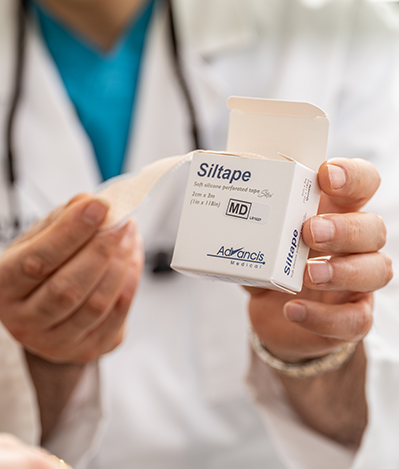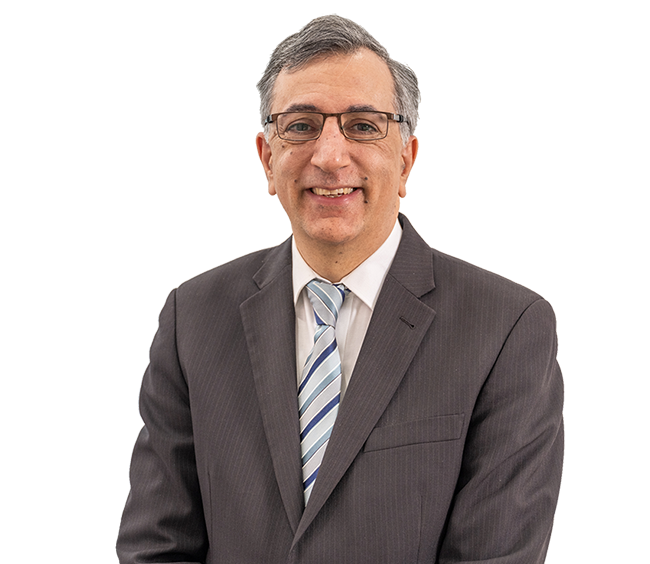Procedure Spotlight
- Hand conditions are an area of special interest to Dr Safvat
- Carpal tunnel syndrome is when the median nerve is compressed in the tunnel.
- Mild carpal tunnel syndrome is usually managed by non-surgical means initially.
- Moderate to severe Carpal Tunnel Syndrome usually requires surgery to decompress the carpal tunnel and relieve the pressure on the median nerve.
At the front of the wrist is a tight tunnel, the carpal tunnel, through which the flexor tendons (8 to the fingers and one to the thumb) and the median nerve pass into the hand. The floor of this tunnel is made by the wrist bones and the roof is made by a tough ligament (the transverse carpal ligament).
Carpal tunnel syndrome (CTS) is when the median nerve is compressed in the tunnel. The median nerve supplies some of the muscles that work the thumb, as well as sensation to the thumb, index, middle and half of the ring fingers.
Symptoms of CTS are typically pins and needles and tingling or numbness in the above 2 ½ fingers and thumb. There may be discomfort and pain in the hand which may also radiate up the forearm. There may also be weakness of the thumb that may interfere with hand function. Often patients complain of waking up at nights with these symptoms and need to shake their hands to get relief. In its most severe form, the muscle at the base of the thumb may even be wasted.

Technique
Mild carpal tunnel syndrome is usually managed by non-surgical means initially. Some of these include splinting to rest the wrist to stop it from bending especially at night. Others include weight loss, fluid loss, activity modification and steroid injection into the carpal tunnel.
Moderate to severe CTS usually requires surgery (carpal tunnel release) to decompress the carpal tunnel and relieve the pressure on the median nerve. This is done by dividing the tough ligament that forms the roof of the carpal tunnel (the transverse carpal ligament) and creating more space in the tunnel.
Hand surgery is one of Dr Safvat’s interests and areas of expertise. Carpal tunnel release (CTR) can be done as an open operation or with a telescope (endoscopically). Dr Safvat has been trained and has experience in both methods but prefers to do it via an open method as the very small benefits of the endoscopic procedure are not worth the increased risks of complications associated with it.
Carpal Tunnel Release is performed in an accredited Sydney hospital, usually under a short general anaesthetic but can also be done under local anaesthetic in some cases.

Recovery
The procedure is done as a day only procedure without the need to stay overnight in hospital. The hand and wrist are usually wrapped in a bulky bandage and patients are discharged with a sling to elevate their hand. Finger movement is possible after carpal tunnel release surgery but wrist movement is usually restricted. The dressing needs to stay dry and intact for one week when Dr Safvat will remove them in Ethique Plastic Surgery’s private rooms in Miranda, Bowral or Concord. He will then give his patients exercises to do after this time. The sutures are dissolvable and will fall out by themselves with some scar massage.
Dr Safvat will give his patients exercises to do starting one week after surgery.

Preparation
Carpal Tunnel Release surgery does not cure everyone. There is about 10% chance of not improving after the surgery. This is often the result of wrong diagnosis. Dr Safvat insists that all his patients have a nerve conduction study before the operation. This not only confirms the diagnosis but can also be used as an objective measurement to gauge Median nerve recovery after the carpal tunnel release procedure.
Patients must also be in good overall health and should stop smoking 3 weeks prior to the surgery.
Scars
There is no way to prevent scars completely after surgery and everyone can scar differently. However, the techniques Dr Safvat uses to suture his wounds are designed to minimise scarring. What’s more, any scarring will fade over time, especially if they are cared for correctly.
Dr Safvat will provide you with his specific protocol for scar management that will help you protect and care for your incisions in a way that will minimise scarring. Patients who have followed Dr Safvat’s protocol for scar management diligently have been very pleased with their progress in reducing and fading of scars.
Dr Safvat will provide you with his specific protocol for scar management that will help you protect and care for your incisions in a way that will minimise scarring.

Complications
While all care and diligence is taken by Dr Safvat to minimise or avoid complications, any surgical procedure can be associated with some general complications and/or specific complications related to the surgery you are having. Choosing a Specialist Plastic Surgeon such as Dr Safvat and having your procedure done in an accredited hospital minimises risks as does using an accredited Anaesthetist. Some general surgical potential complications are:
- Infection that may require antibiotics (Dr Safvat prescribes all patients antibiotics after surgery to minimise this risk).
- Allergic reaction to dressings and other items used during the procedure.
- The formation of blood collection (haematoma) which could require additional surgery.
- Scars heal differently in different people. Some people are genetically prone to develop keloid scars. Hypertrophic scars develop when there is a complication in the healing process. Whilst not ideal, there is no threat to your health if you develop these.
- Anyone can have a heart attack or stroke from a clot. This risk is slightly increased with anaesthetics.
Specific complications:
- Pillar pain is an uncommon but discomforting side effect. This is usually pain over the cut end of the transverse carpal ligament. Fortunately in most cases it is temporarily but may last 6-12 months.
- Recurrence of symptoms of Carpal tunnel release. This again is fortunately rare but may require further surgery.
- Persistence of some of the symptoms. This depends on the amount of damage to the median nerve before the surgery. The median nerve is like brain tissue and any permanent damage to it will not recover and any severe damage to it may take up to 6-12 months to recover. But in almost all cases the pins and needles and pain recover the day after the surgery.
Cost
Carpal Tunnel Release has a Medicare item number and patients should get a rebate from Medicare and their health fund (where applicable). The hospital costs are usually covered by private health funds depending on the patient’s level and type of coverage. Alternatively, you can have the procedure done in a Private Hospital as a Self-Funded patient. Detailed information regarding costs will be provided to you after your consultation.
Frequently asked questions
What can I expect long term after the surgery?
Usually pain and the night symptoms resolve fairly immediately after the surgery, but the numbness and thumb weakness may persist for up to 12 months, depending on the extent of damage to the nerve prior to the surgery. Wasting of the thumb muscles may never recover.
Can I have both hands done at the same time?
Whilst it is possible to operate on both hands at once, it is not practical from a recovery perspective as both hands will be out of action for several weeks.
Once I have the surgery, will I require any further treatment?
Most of Dr Safvat’s patients do not require hand therapy provided they follow his exercise programs post operatively. A small handful of patients need hand therapy following their surgery which he will organise for them.
When is it too late for carpal tunnel surgery?
Although it can be a bit more difficult to treat carpal tunnel syndrome if you’ve had symptoms for some time, it’s usually never too late for you to undergo treatment for carpal tunnel syndrome as it prevents further damage to the median nerve.
Dr André Safvat – Specialist Plastic Surgeon
Renowned for his dedication to his patients, his attention to detail and impeccable outcomes, Dr Safvat’s unparalleled expertise is reflected in the quality, professionalism and dedication of every member of our team.


